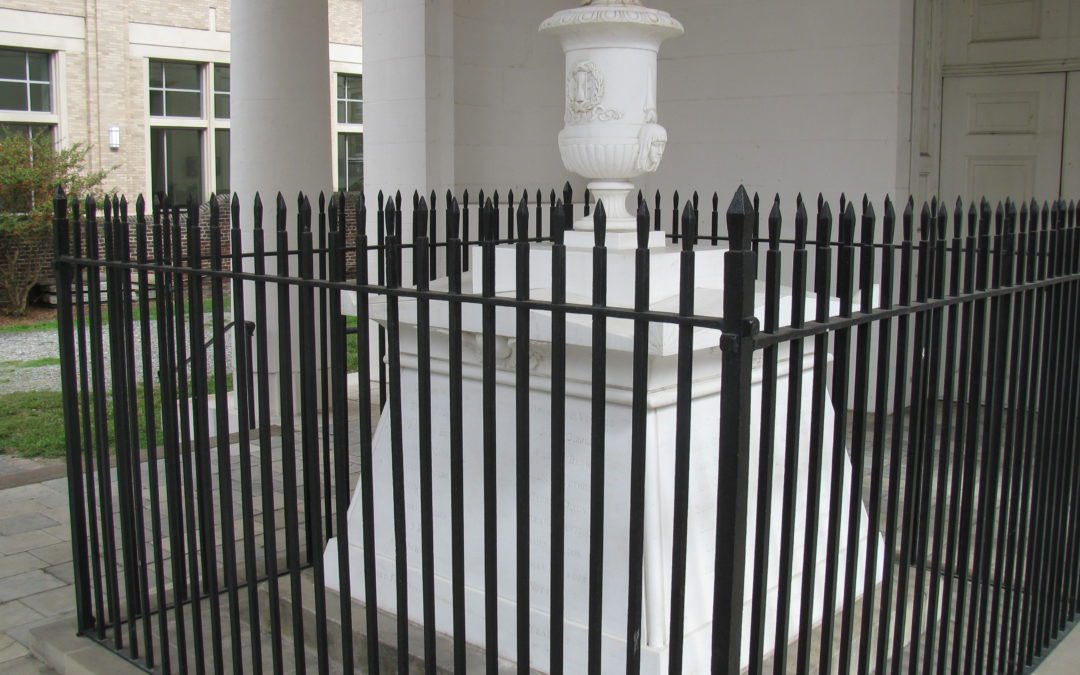
This is the monument that I had Henry “Box” Brown hide behind. There wasn’t a fence around the monument in 1849.
In the opening scene of my novel, The Disappearing Man, Henry Brown is running for his life from slave patrollers in the middle of the night on the streets of Richmond. He winds up hiding behind a monument at a church, on which are inscribed 72 names. Those 72 people died in one of our nation’s first catastrophic fires–the Richmond Theater fire of December 26, 1811. It has become a forgotten fire.
The blaze started when a lit chandelier was being raised behind a lowered curtain. The rope raising the chandelier became entangled, and the chandelier candles accidentally ignited some of the hanging scenery. Because the fire started behind the lowered curtain, it took some time for the audience to realize what was happening. When they did, it was chaos.
Among the 72 who died was the Virginia governor, a former senator, and many other wealthy members of society. Among those who survived was William Barret (Henry Brown’s master) and the mother of the future husband of Rose Greenhow–one of the most infamous spies during the Civil War. One rumor was that a child by the name of Edgar Allan Poe lost his parents in the fire, but that is just a legend. Monumental Episcopal Church was built on the site of the disaster, and a monument in front of the church is dedicated to those who had died. This is the monument that I have Henry Brown hide behind, and you can see it there today.
Among the heroes of the night was Gilbert Hunt, a slave who was credited with rescuing twelve people.
By Doug Peterson

